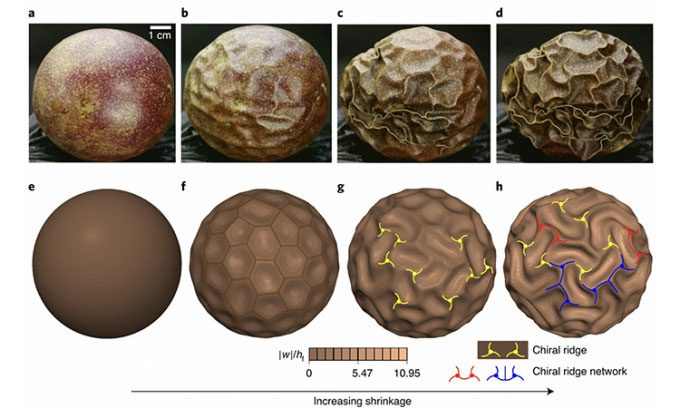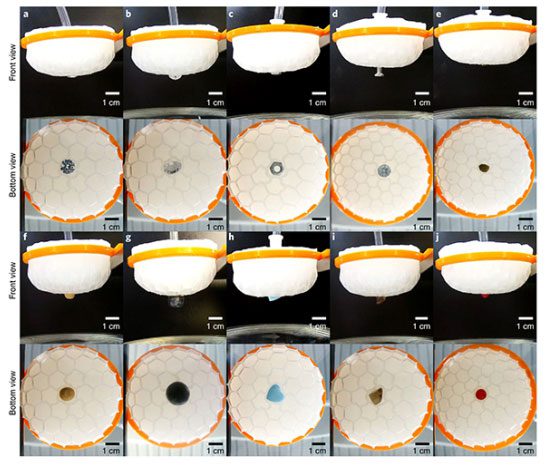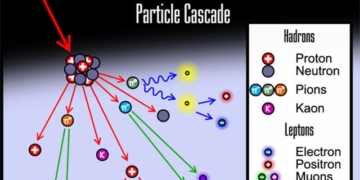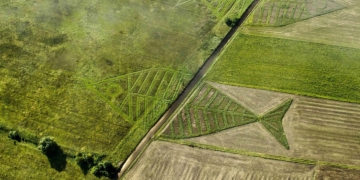A Chinese team of scientists has developed a device inspired by the wrinkled surface of a dried passion fruit, capable of accurately picking up small objects.

Stages of dried passion fruit. (Image: SCMP).
According to a report by Interesting Engineering on October 25, a newly discovered type of wrinkle on the surface of dried passion fruit has inspired the development of a device that can clean up space debris and hazardous materials. Fan Xu, Xi-Qiao Feng, and their colleagues at Fudan University in Shanghai presented their findings on the wrinkled surface of the passion fruit in a study published in the journal Nature Computational Science.
In this new research, the team dehydrated passion fruits to examine the wrinkle patterns. A colleague informed Xu that he had discovered some interesting patterns appearing on the dried fruit. They observed that the passion fruit initially shrinks into a buckyball shape, with its surface covered by hexagonal and pentagonal shapes similar to a soccer ball. A network of ridges formed and deepened as the fruit continued to dry.

Chinese researchers testing a device inspired by passion fruit to pick various objects. (Image: SCMP)
Inspired by these ridges, the team simulated them in the lab and developed a soft silicone ball. They found that the pattern of the ridges could help “capture” small objects like diamonds, blueberries, or heart-shaped candies due to a property known as chirality (asymmetry).
The research team stated that the new device could facilitate the design of a robot for cleaning up small pieces of space debris. “A robotic arm equipped with a spherical gripper could collect small space debris with high precision,” Xu said. On Earth, it could pick up hazardous particles such as explosives.
According to NASA, there are approximately half a million pieces of debris the size of marbles and 100 million other fragments as small as pencil tips orbiting the Earth. Even the smallest debris, such as paint flecks from rockets, can pose a danger to spacecraft when colliding at extremely high speeds (around 25,200 km/h) in low Earth orbit. In fact, these paint flecks have previously forced NASA to replace several windows on the space shuttle.





















































